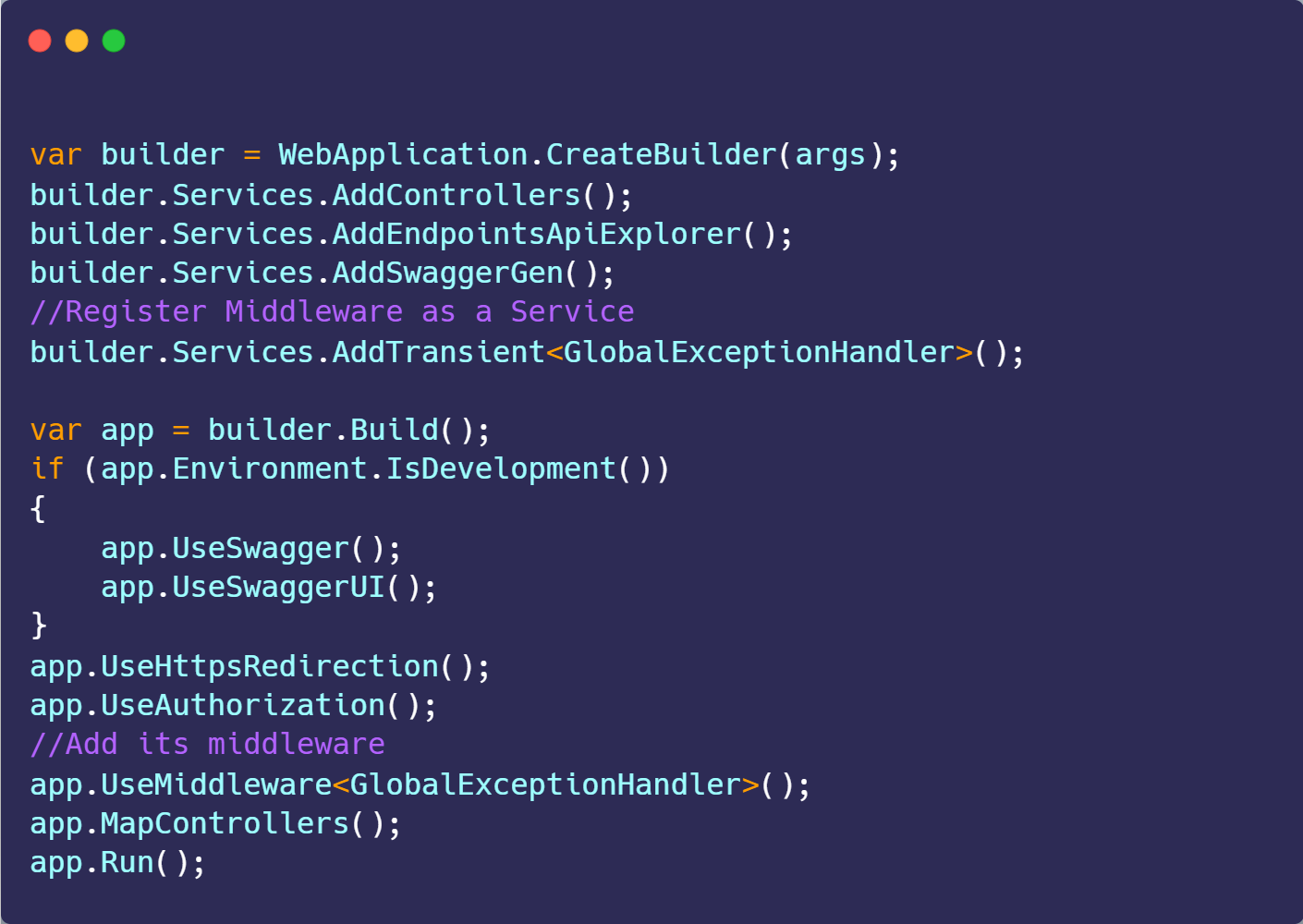Hello friends,
In this article, I will explain What is global exception and Pros and cons of global exception and
- How to implement it via middleware’s
Introduction
of Global Exception
We often come up with exceptions in
our application and we have two ways in general to handle that exception.
- Handle at
controller/service level everywhere in the application
- Handle from one
place and control the application
Pros
and Cons of Global Exception
Let’s see the pros and cons of this
approach
Pros :
- Code becomes
easy to manage because we don’t need to look into n different try-catch blocks, just look from one place and deal with them.
- More readable
because a few lines of code managing the whole exceptions of the application
- Removes
repeated code (try-catch everywhere)
- It gives us
more control so we can catch exceptions and return responses of our own
type, in most cases we return Internal Server Error.
Cons :
- A global exception
handler can make it harder because sometimes it will catch the exception at a broad level and deal with it accordingly without digging down to the exact
lower-level exception
If you are on short time and you need
to implement exception handling then global exception handling is the best
solution.
How to
Implement it via Middleware
We have different ways to implement
global exception handling in our .NET application e.g. using custom/built-in
exception filter or creating our custom middleware using IMiddleware and
implementing its methods.
So every time before and after
controller request will come in this middleware and we would add a try-catch
block here and the request would be caught here.
Step 1: Create Middleware
If you are worried about what is JsonConvert.SerializeObject(response) then
check post on ‘Serialization’.
Step 2 : Register the Middleware
as a Service and then use it in Middleware in Program.cs
That’s all you need to do. Now you can
add any exception by throwing a new Exception("This is a test
exception"), and test if it works or not
Happy programming!!
Don’t forget to leave your feedback and comments below!
Regards
Sujeet Bhujbal
--------------------------------------------------------------------------------
Blog: www.sujeetbhujbal.com
Personal Website :-http://sujeetbhujbal.wordpress.com/
CodeProject:-http://www.codeproject.com/Members/Sujit-Bhujbal
CsharpCorner:-http://www.c-sharpcorner.com/Authors/sujit9923/sujit-bhujbal.aspx
Linkedin :-http://in.linkedin.com/in/sujitbhujbal
Twitter :-http://twitter.com/SujeetBhujbal
------------------------------------------------------------------------------


